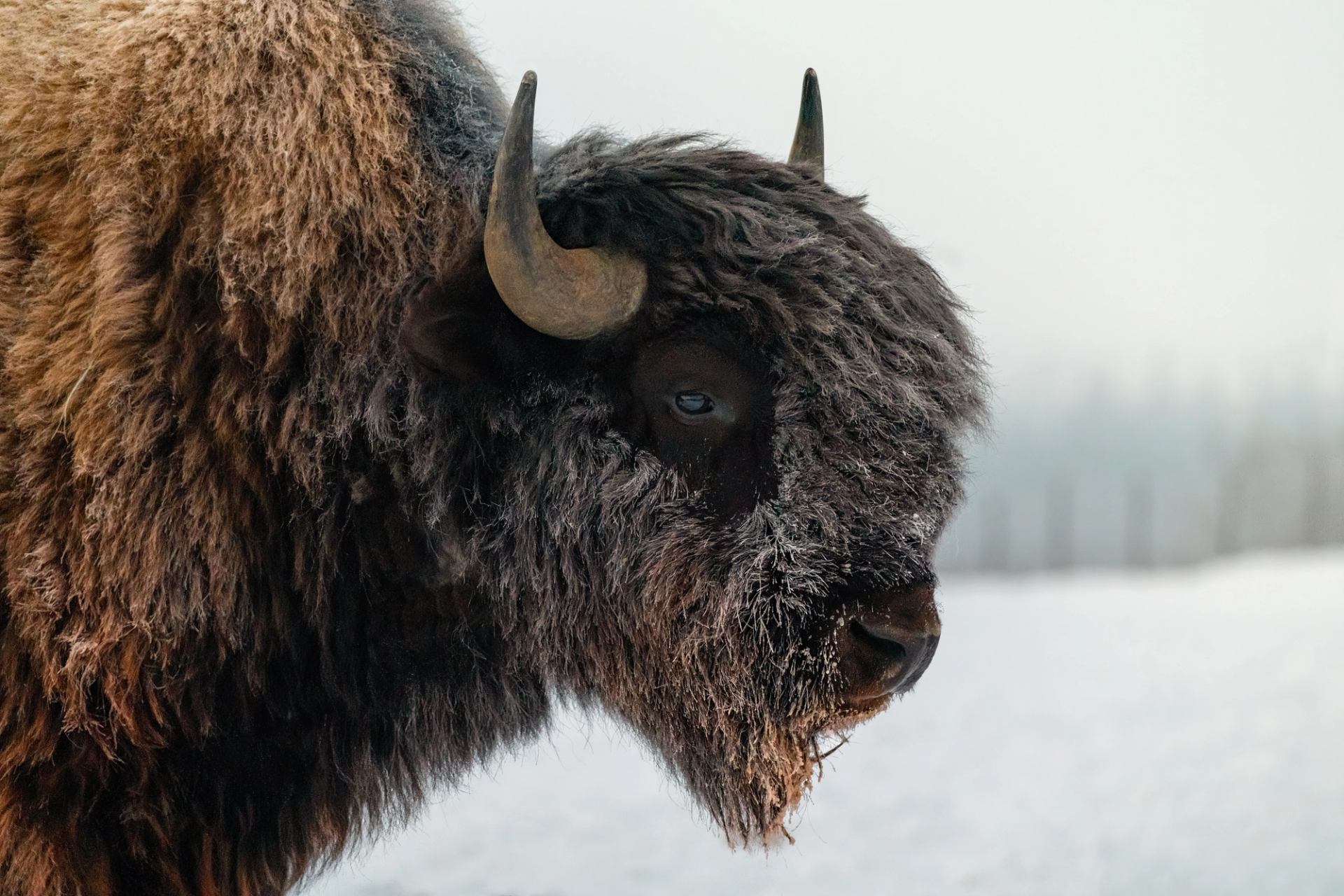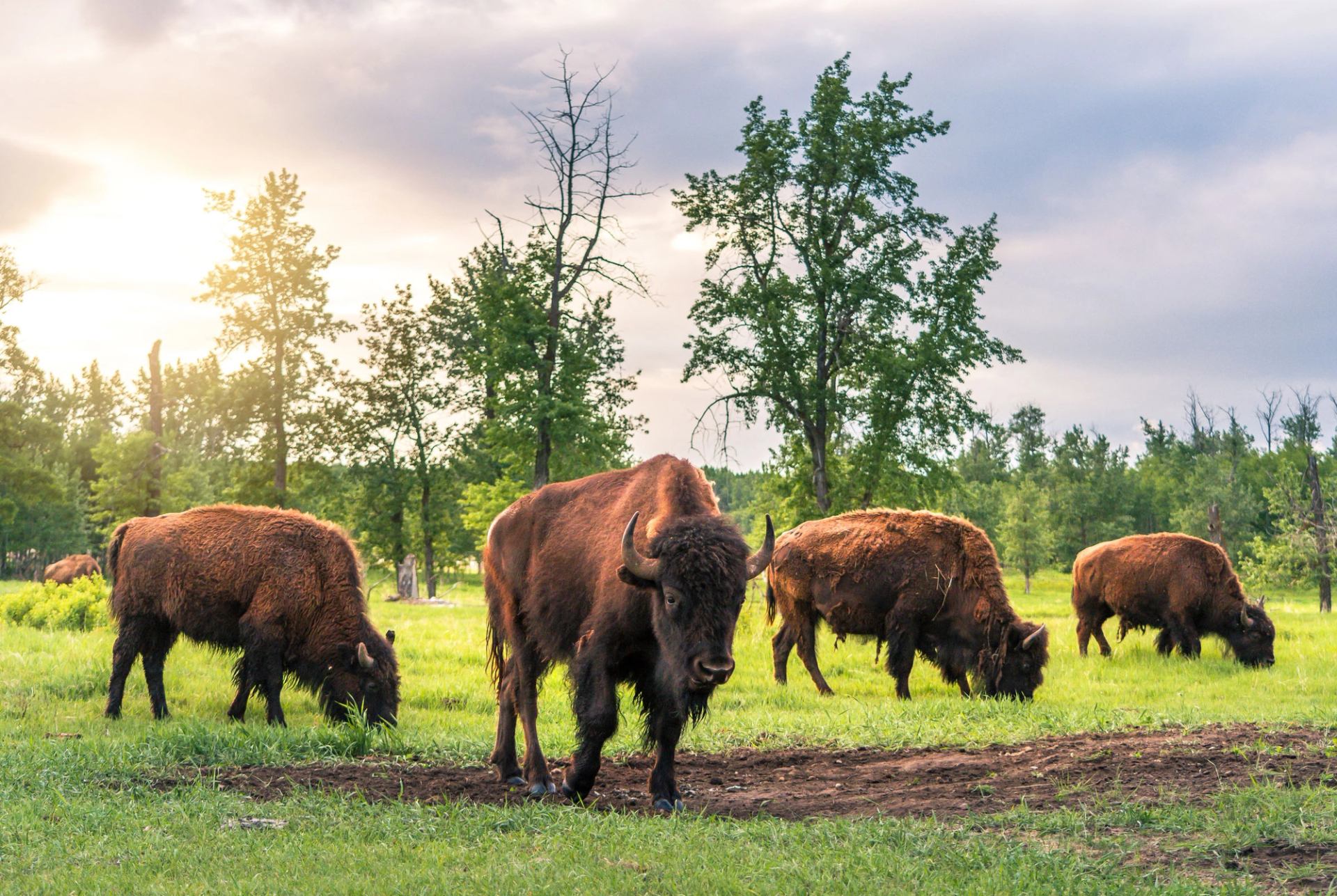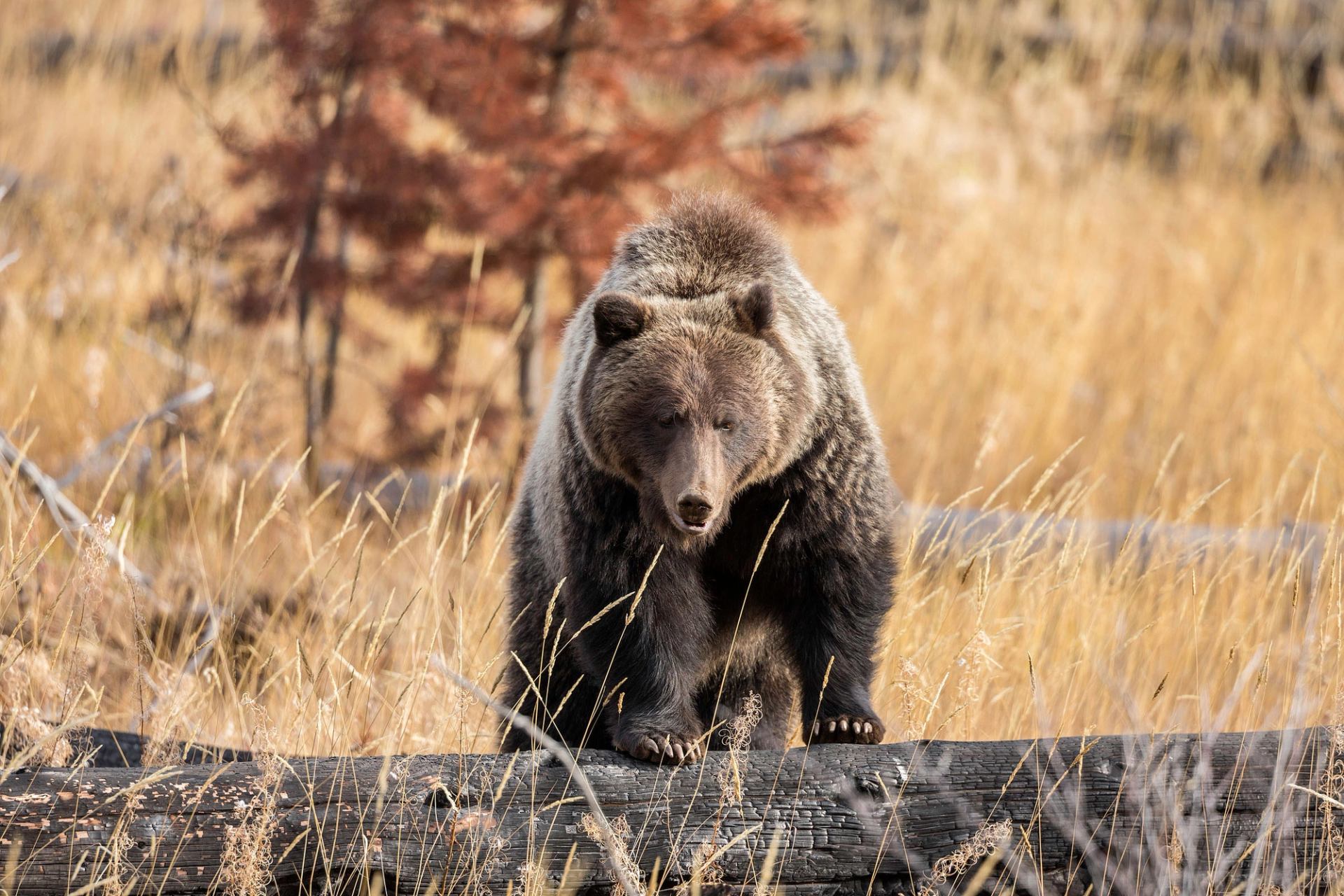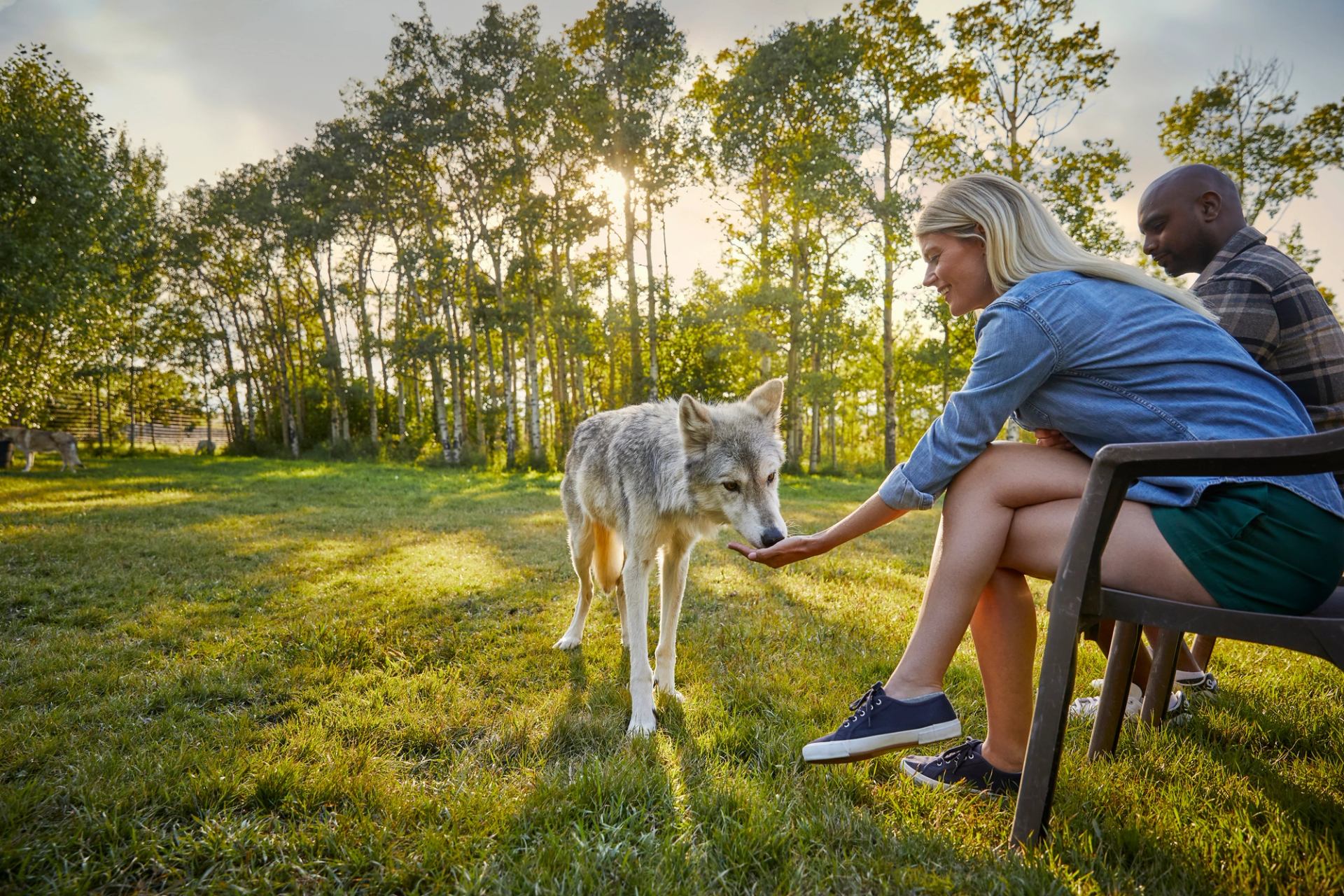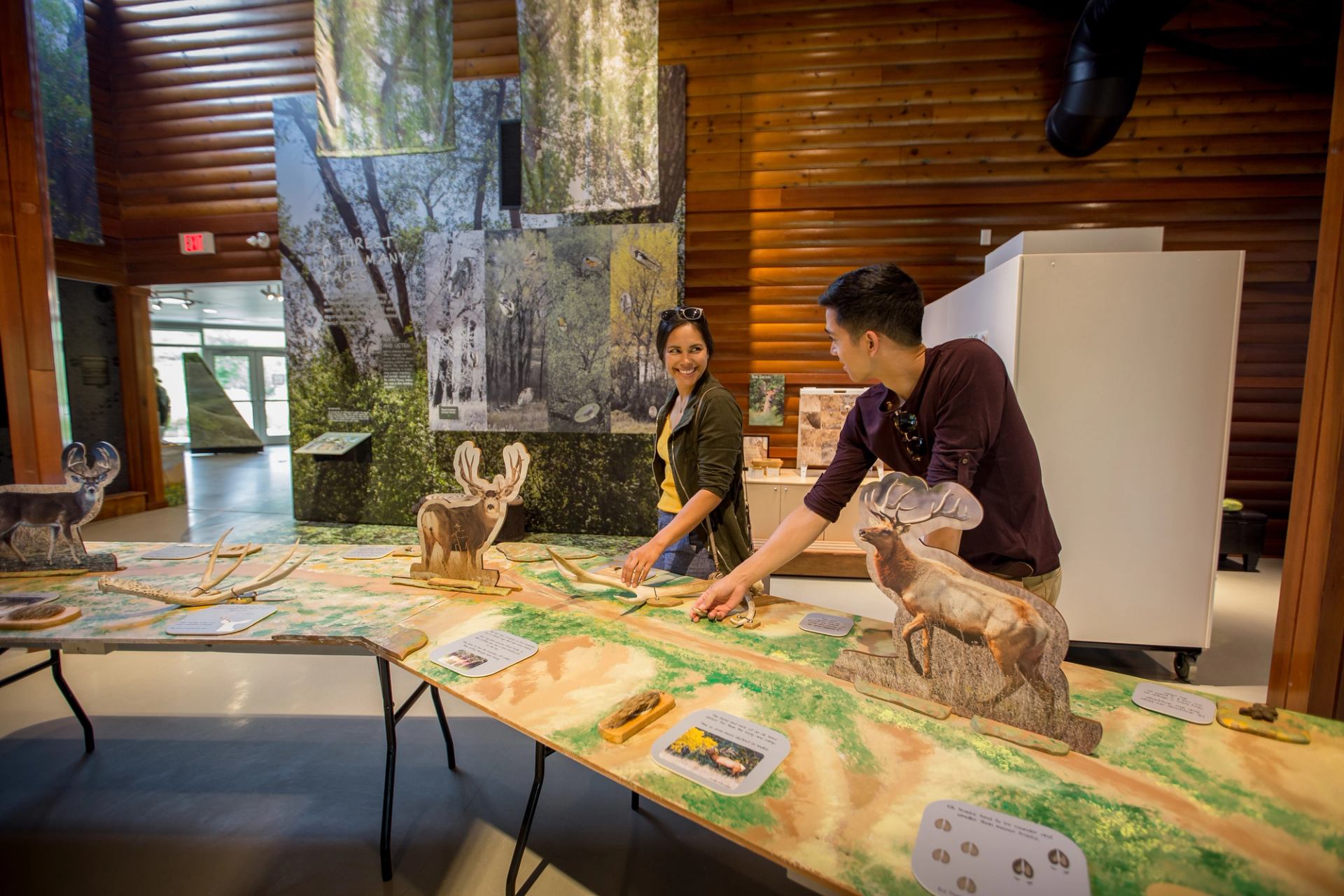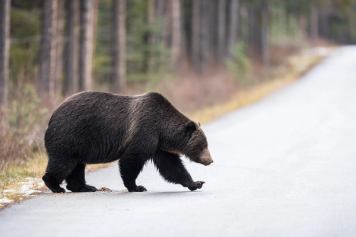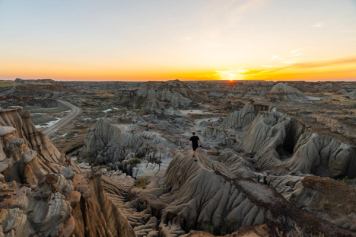Rocky Mountains
Alberta’s Rocky Mountains are home to two iconic and important national parks that are also UNESCO World Heritage sites: Banff National Park and Jasper National Park. Amid the soaring mountains live a prolific amount of wildlife among jaw-dropping scenery that attracts visitors from around the world.
Both Banff and Jasper National Parks offer opportunities to see moose, bighorn sheep, mountain goats, elk, deer, wolves, lynx, beavers, and, of course, Alberta’s legendary black and grizzly bears.
The Bow Valley Parkway (Highway 1A) and the Lake Louise Gondola in Banff National Park are great (and safe) ways to view wildlife.
Popular viewing locations in Jasper National Park include the Maligne Lake Road, Highway 16 west of Jasper towards Mount Robson and the Icefields Parkway.
It's important to know the difference between Alberta’s two bear species. Black bears are usually smaller and darker, but size and colour is not the best indicator. The most reliable way to tell them apart is a prominent shoulder hump. If present, it’s likely a grizzly.
If you spot a bear from the roadway, they are most likely simply foraging for berries:
- Do not stop or get out of your vehicle. Drive by slowly.
- Warn approaching motorists by flashing your high beams.
When on a hiking or biking trail:
- Make noise to keep bears aware of the presence of humans. Talk loudly, clap or sing often.
- Hike in groups of four or more. Larger groups are less likely to encounter serious bear issues.
- Be especially cautious around a female with cubs, as they are highly protective of their young.
- Do not step off marked trails and avoid hiking or biking at dawn and dusk.
- Always carry bear spray and know how to use it.
A planned excursion with wildlife viewing experts guarantees an amazing experience. In Banff National Park, Great Divide Nature Interpretation provides “edu-taining tours” by experienced master interpreters. Discover Banff Tours offers personalized, small-group tours for one-of-a-kind experiences. Radventures is another top-rated adventure tour operator catering to smaller group sizes.
In Jasper National Park, SunDog Tours helps plan and execute unforgettable wildlife expeditions. As does Maligne Adventures, Canadian Skyline Adventures and Jasper Hikes and Tours, all of which have passionate, knowledgeable guides.
